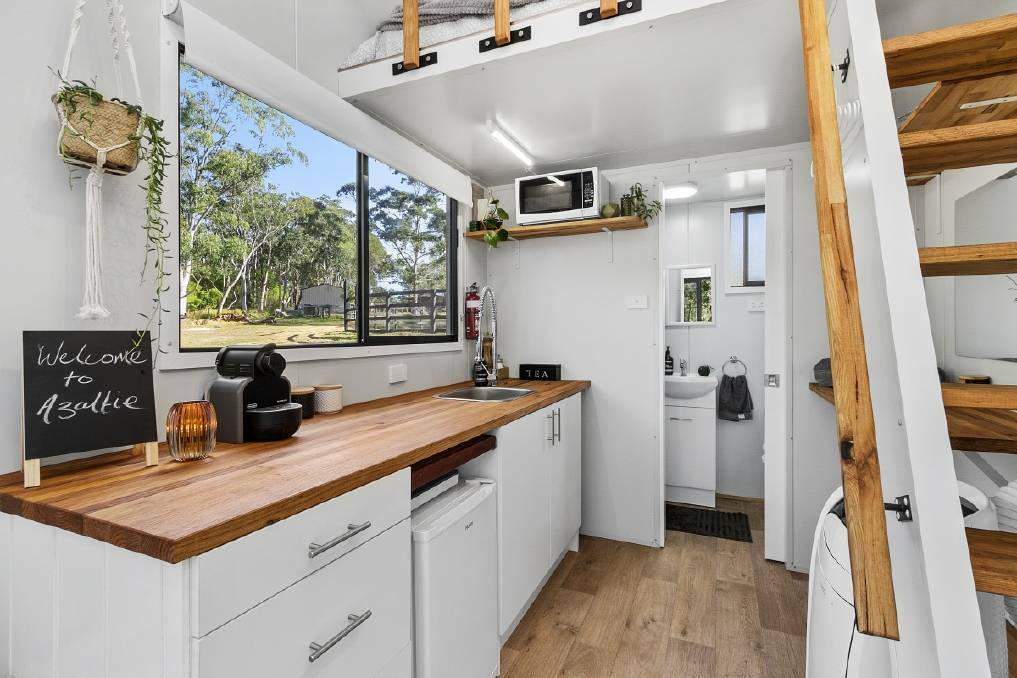Once upon a time, ecotourism was considered quite a niche concept, designed for a smaller slice of holidaymakers who cared more about the social and environmental impacts of where they visited than the location of the closest souvenir shop.
Our growing social conscience helped propel this burgeoning industry, and nowadays there’s no shortage of options for ecotourists, from adrenalin-filled adventure holidays to relaxed pursuits that involve little more than coffee and a camera.
Joining this industry juggernaut in 2017 was Tiny Away, born out of a trip along Victoria’s Great Ocean Road, in which the founder identified the benefits of escaping to the great wide open to recharge your batteries.
Together with a couple of mates, he hatched a plan to place tiny houses in scenic spaces, so others could reap the rewards of a true getaway and in doing so, discover a regional or rural patch they mightn’t have visited before. It also provides Australians with the unique opportunity to reconnect with nature, without completely disconnecting from life as they know it.

There are now Tiny Away dwellings dotted throughout Victoria and New South Wales, the sustainably-built tiny houses often positioned on the property of a working farm.
Tiny Away is also giving back to the Australian communities still feeling the effects of the bushfires, partnering with rural property owners for an additional source of income. The fully furnished tiny house is mobile and has all the necessary fittings ready for guests to stay, with no upfront capital needed to get involved. For each booking made, Tiny Away shares up to 45 per cent of the profit with the landowners.
The house we stayed in sits on the edge of a goat farm, looking out across rolling hills. While other addresses might have views of grassy meadows or natural woodland, the true appeal lies in their common denominator; somewhere to escape the rat race and switch off for a much needed short break (and depending on the signal strength of the WiFi, you could be forced to do just that).
It’s also an opportunity to experience living in a tiny house, and gain some insight into this global phenomenon.
The tiny house movement we identify with today started 20 years ago, first in the USA, before quickly being adapted by other countries (including Australia) that also appreciated the allure and benefits of micro houses; as a potential solution to housing affordability, a means to living more simply, and let’s face it, a cute addition to our social media feeds.

Tiny houses are currently experiencing a resurgence of sorts, people’s interest piquing once again due to the coronavirus and subsequent restrictions.
With unemployed adult children returning back to their childhood homes in droves, and couples suddenly having to share a workspace that doubles as their sanctuary, it’s little wonder tiny homes appear to be an obvious solution.
Staying in one of Tiny Away’s compact dwellings gives interested parties an opportunity to “try before you buy”, and ascertain whether you’re really cut out for tiny living.
Given their size, the fit out of Tiny Away’s houses is understandably basic, albeit with clever nooks and ample hooks to help you store bags and personal items.
Some household essentials such as the fridge (portable) and toilet (compost) are in keeping with the duration visitors are likely to stay. Importantly, solar panels meant the shower was hot (with impressive water pressure), while the double bed was super comfy – although keep in mind that beds occupy the roof space in most tiny homes, so be prepared to climb a ladder.
Kitchen basics, bedlinen and towels are all supplied, and we also had a pile of brochures detailing local attractions and restaurants – what better way to explore unfamiliar treasures within the region?
If you’d prefer to hunker down during your short stay, pack some board games, that book you’ve been meaning to read, the ingredients for your ideal grazing platter, or whatever you need to laze the day away on your tiny escape.
For details, visit tinyaway.com




